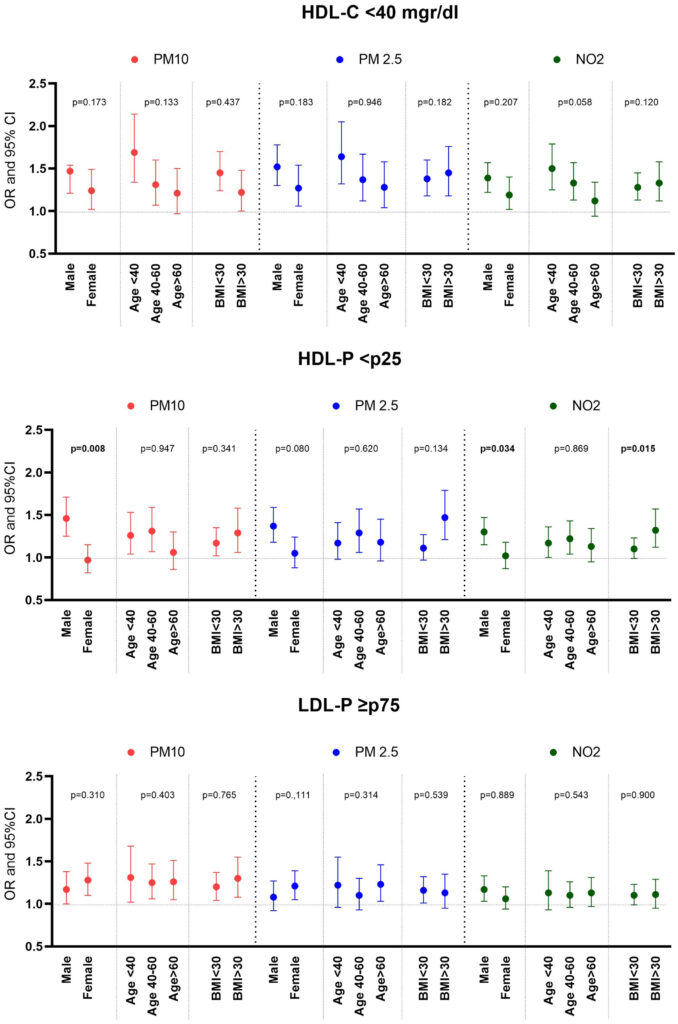The World Health Organization has identified air pollution as the leading environmental health risk globally, responsible for 4.2 million deaths per year. With more than half attributed to ischemic heart diseases and strokes. Air pollution can impact the cardiovascular system through processes such as inflammation, systemic and pulmonary oxidative stress, or dysfunction of the autonomic nervous system.
An innovative investigation reveals a significant relationship between blood lipid levels and exposure to air pollutants. This correlation suggests a connection between air pollution and atherosclerosis. A condition characterized by the accumulation of fats, cholesterol, and other substances within arteries and their walls.
The study, recently published in the European Journal of Clinical Investigation, discovers that air pollution, commonly linked to respiratory problems, also negatively affects blood lipid levels. Potentially increases the risk of heart diseases.
The research, based on data from 4,647 adults in Spain collected from the national di@bet.es study between 2008-2010 and 2015-2017, aimed to understand the prevalence of type 2 diabetes and other metabolic diseases. In addition to physical examinations and blood samples, information on various factors such as age, gender, educational level, lifestyle habits, and exposure to air pollutants was collected.
The study analyzed how exposure to air pollutants, such as fine particles and nitrogen dioxide, is related to blood lipid levels. A significant connection was found between pollution exposure and lipid profiles. It suggested a higher risk of cardiovascular diseases, highlighting the importance of public health policies.
Read the full article here.

Participants: Link between Air Pollution and Blood Lipid Levels
Led by Sergio Valdés and Gemma Rojo Martínez, from the Diabetes and Associated Metabolic Diseases area of CIBER (CIBERDEM), and affiliated with the University Regional Hospital of Malaga and the Biomedical Research Institute of Malaga-IBIMA-BIONAND Platform.
In addition to Sergio Valdés and Gemma Rojo, numerous CIBERDEM teams have participated in the research. Cristina Maldonado-Araque, Eva García-Escobar, Sara García-Serrano, and Wasima Oualla-Bachiri from the University Regional Hospital of Malaga and IBIMA-Bionand. Alfonso Calle-Pascual from the Health Research Institute University Hospital S. Carlos (IdISSC). Luis Castaño and Sonia Gaztambide from Cruces University Hospital, BioCruces, UPV/EHU, Barakaldo. Josep Franch-Nadal from the Catalan Institute of Health and IDIAP – Jordi Gol Foundation of Barcelona. F Javier Chaves from the Foundation for Research of the Clinical Hospital of the Valencian Community. Joan Carles Vallvé, Montse Guardiola, and Josep Ribalta from Rovira i Virgili University (URV) IISPV. and Núria Amigó URV-IISPV, from the Metabolomic Platform and Biosfer Teslab.
From the Center for Energy, Environmental, and Technological Research (CIEMAT), Marta García, Juan Luis Garrido, Victoria Gil, and Fernando Martín have participated, while from the University of Malaga, José L. Galán and Gabriel Aguilera have also contributed.


